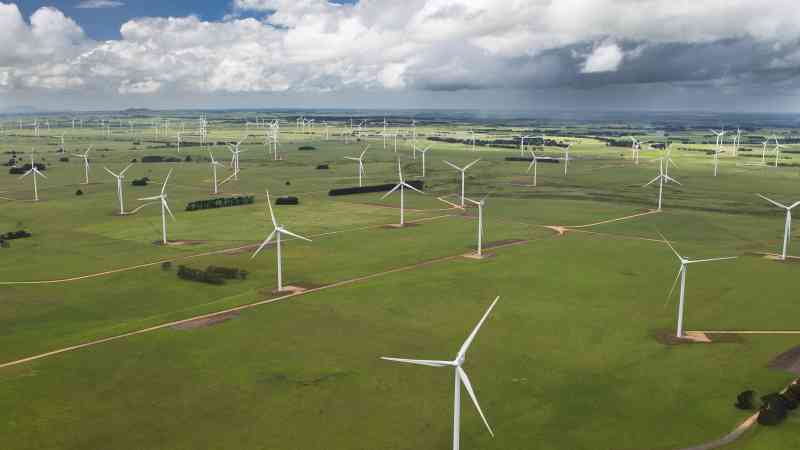A Danish maker of wind turbines is in talks to produce the world’s biggest blades at a new factory in the northeast of England.
Vestas said that almost 2,000 jobs could result from plans to expand its British operations to produce parts for its new model of offshore wind turbine.
As well as a new factory, it plans to upgrade its plant on the Isle of Wight to cope with the 115.5m blades and to source turbine towers from new British third-party manufacturing sites.
The plans are contingent on Vestas securing enough orders for its turbines from developers building wind farms in British waters. First customers will have to succeed in a government auction of subsidy contracts early next year.
Britain is the world’s biggest offshore wind market and the technology is at the centre of the government’s plans for a green industrial revolution that could result in the quadrupling of installed capacity this decade. However, less than 30 per cent of capital expenditure on offshore wind farms is in the UK, with most big components made overseas. Blades are one exception thanks to the Vestas factory on the Isle of Wight and a Siemens factory in Hull.
The government aims to benefit from the industry by making offshore wind developers give more specific commitments to British manufacturing in their supply chain plans — a prerequisite to be eligible for subsidy contracts.
It has committed to invest £160 million in upgrading ports to accommodate new factories, including Teesside and the Humber. In March, General Electric said that it would build a new blade factory in Teesside.
Vestas, Siemens and General Electric are vying to be preferred suppliers as developers draw up their supply chain proposals for the next auction next year.
Henrik Andersen, Vestas’ president, said that if it secured enough turbine orders from the auction, “Vestas is intent on expanding its already sizeable UK footprint”.
Vestas’s operations in the Isle of Wight employ about 700 people but in 2009 it shed hundreds of workers as production was wound down. The site was revived and switched to making offshore wind turbines.
